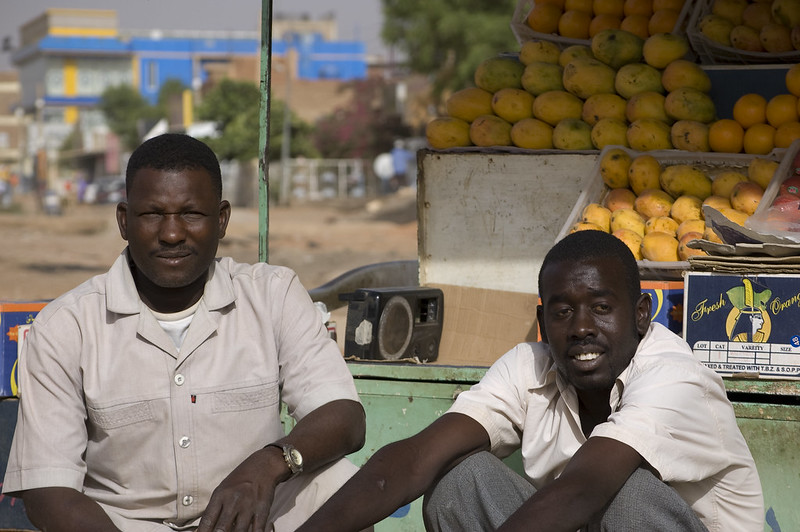How Emergency Response Rooms are Alleviating Poverty in Sudan
 Sudan is the third-largest country in Africa and one of the poorest in the world, with 57% of the population in extreme poverty. Since April 2023, a civil war in the country has killed more than 18,800 civilians and forced 14 million people to leave their homes. The United Nations (U.N.) has estimated that 30.4 million people need humanitarian assistance. The WFO and WHO operate in the area, but the conflict’s shifting conditions make the delivery of international aid difficult. However, another form of aid is alleviating poverty in Sudan: Emergency Response Rooms (ERRs).
Sudan is the third-largest country in Africa and one of the poorest in the world, with 57% of the population in extreme poverty. Since April 2023, a civil war in the country has killed more than 18,800 civilians and forced 14 million people to leave their homes. The United Nations (U.N.) has estimated that 30.4 million people need humanitarian assistance. The WFO and WHO operate in the area, but the conflict’s shifting conditions make the delivery of international aid difficult. However, another form of aid is alleviating poverty in Sudan: Emergency Response Rooms (ERRs).
Community-Led Aid in Sudan
The first ERRs in Sudan began in 2019 and now comprise more than 700 volunteer-run spaces that provide food, medicine and support for communities, alleviating poverty in Sudan. While international agencies face limitations, the ERRs deliver community-led support that improves how donations are used and localizes the delivery of aid. This approach—known as mutual aid—has reached more than 11.5 million people. The ERRs’ impact has earned them a nomination for the 2025 Nobel Peace Prize. Through community networks, efficient delivery and adaptable structures, ERRs offer a localized model of aid in Sudan.
Community Links and Flexibility
In addition to adapting quickly to the civil war’s impact on aid delivery, the ERRs operate within local communities and use pre-existing resources. The outbreak of war worsened Sudan’s food crisis, putting 25 million people at risk of starvation. While U.N. food trucks are restricted to refugee camps in neighboring Chad, ERRs can deliver food supplies. ERRs in the state of West Kordofan feed 177,000 people daily.
As Kholood Khair, director of the think tank Confluence Advisory, puts it, “[ERRs] are able to negotiate access locally; they are able to buy from local markets; they are able to make their activities as flexible as needs be, very unlike NGOs.” That flexibility has allowed ERRs to serve various roles over the years. A forerunner to the ERRs started in 2013 in response to mass flooding and ERRs played a key role during the COVID-19 pandemic by raising awareness, disinfecting hospitals and distributing medicine. The ERRs’ local roots and adaptability continue to help address crises as they arise.
Mutual Aid and Cost Efficiency
International aid often involves donor dependency and external control. ERRs, by contrast, give local communities the tools to manage their own needs. Rather than relying on international structures, mutual aid efforts in Sudan have created local alternatives. According to the Mutual Aid Sudan Coalition—a group of philanthropic and aid organizations that support ERRs—$0.95 of every $1 donated goes directly to local actors. In comparison, UNICEF reports that £0.75 of every £1 goes toward its work for children and the British Red Cross states that £0.65 of every £1 helps people in crisis. This higher percentage of funds reaching local communities reveals how ERRs provide a more direct use of donations.
The Future of ERRs and International Aid in Sudan
In September 2024, the Mutual Aid Sudan Coalition pledged to allocate $2 million to ERRs by the end of the year, calling mutual aid “the most viable and cost-effective mechanism to reach at-risk communities.” While this support remains essential, some challenges persist. A recent report from the Social Science in Humanitarian Action Platform stated that the success of ERRs might “enable a new era of localization in Sudan,” but noted that international aid frameworks do not align with the ERRs’ model.
Bringing ERRs closer to international aid networks could increase funding opportunities. However, doing so could reduce the flexibility and responsiveness that have made them effective. Maintaining the ERRs’ local approach can potentially preserve their ability to respond directly and efficiently to community needs.
– Oliver Tanner
Oliver is based in London, UK and focuses on Technology and Solutions, Politics for The Borgen Project.
Photo: Flickr
